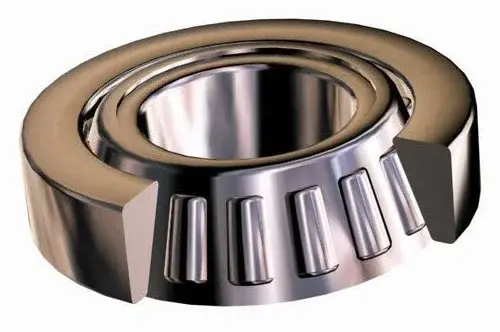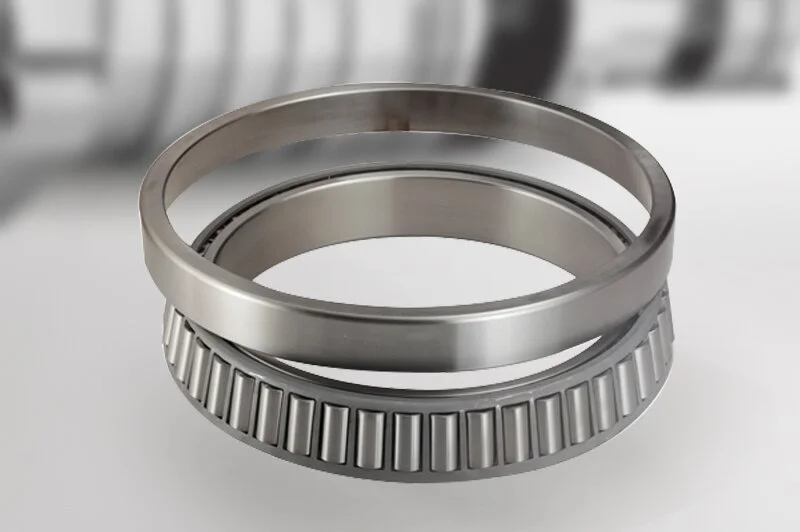What are the Common Applications of Cone Tapered Roller Bearings?
Cone tapered roller bearings are crucial components in modern mechanical systems, featuring tapered inner and outer ring raceways with tapered rollers arranged between them. This design enables them to handle combined radial and axial forces simultaneously, making them essential in applications where traditional bearings might fail. Their conical design allows for precise load distribution, providing reliability and durability under challenging operating conditions across numerous industries.
What Makes Cone Tapered Roller Bearings Essential in Automotive Applications?
How Do Cone Tapered Roller Bearings Enhance Vehicle Wheel Performance?

Cone tapered roller bearings are fundamental to automotive wheel assemblies, withstanding complex loading conditions while ensuring smooth operation. In wheel hubs, these bearings accommodate both radial loads from vehicle weight and axial forces generated during cornering. Their precisely angled rollers and raceways handle these combined loads efficiently while maintaining proper wheel alignment, reducing friction and extending component lifespan. The adjustable clearance feature allows engineers to fine-tune wheel bearing preload for specific vehicle requirements. Modern vehicles typically use matched pairs of cone tapered roller bearings in opposed arrangements to maintain wheel stability under varying driving conditions while minimizing noise and vibration.
Why Are Cone Tapered Roller Bearings Critical in Automotive Transmission Systems?
In automotive transmissions, cone tapered roller bearings facilitate smooth power transfer while withstanding substantial forces during operation. These bearings support transmission shafts and gears, providing precise alignment even under fluctuating torque conditions. Their conical geometry makes them uniquely suited for managing thrust loads in helical gear systems. Both automatic and manual transmissions rely on these bearings to maintain gear mesh precision and minimize power losses. Cone tapered roller bearings must maintain dimensional stability across wide temperature ranges, as transmission fluid temperatures fluctuate significantly during operation. Their ability to handle some misalignment proves valuable in transmission designs where manufacturing tolerances and thermal expansion affect component positioning.
How Do Cone Tapered Roller Bearings Contribute to Differential and Axle Performance?
In vehicle differentials and axle assemblies, cone tapered roller bearings support substantial loads while enabling smooth rotational movement. These bearings withstand torque transmitted through the drivetrain and shock loads encountered during acceleration, deceleration, and off-road driving. Their configuration is ideal for differential applications due to exceptional capacity to handle combined loads simultaneously. In rear-wheel and four-wheel drive vehicles, these bearings support the pinion gear that transfers power from the driveshaft to the ring gear. The adjustable preload capability allows for optimal setting of differential bearing clearances, minimizing backlash while avoiding excessive friction. Heavy-duty trucks employ larger, reinforced cone tapered roller bearings designed for extreme loads.
How Are Cone Tapered Roller Bearings Utilized in Industrial Machinery?

What Role Do Cone Tapered Roller Bearings Play in Heavy Industrial Gearboxes?
Industrial gearboxes represent demanding applications for bearings, requiring components capable of withstanding extreme loads while maintaining precision. Cone tapered roller bearings provide necessary support for input, intermediate, and output shafts in heavy-duty systems. These bearings withstand tremendous forces transmitted through the gear train and accommodate axial thrust loads generated by helical and herringbone gear designs. Their precisely engineered contact angles and roller profiles distribute combined loads effectively, reducing stress concentrations. In cement, mining, and steel processing equipment, specialized cone tapered roller bearings with enhanced sealing systems ensure reliability despite contamination challenges. Their ability to maintain proper clearances under fluctuating thermal conditions proves invaluable in gearboxes experiencing significant temperature variations.
Why Are Cone Tapered Roller Bearings Preferred in Heavy Construction Equipment?
Construction equipment operates under challenging conditions, subjecting components to extreme loads, contamination, and frequent shock impacts. Cone tapered roller bearings have become preferred in applications such as excavator swing gears, bulldozer final drives, and crane slewing rings due to their load-carrying capabilities. These bearings manage substantial radial loads while handling significant thrust forces during operation. Their conical design creates an optimal load path that distributes forces efficiently through the rolling elements. Construction equipment frequently experiences misalignment due to frame flexing and uneven terrain, making the relative tolerance to misalignment particularly valuable. Advanced sealing systems protect against contaminants such as dirt, sand, and water, which would otherwise accelerate wear.
How Do Cone Tapered Roller Bearings Enhance Performance in Paper and Steel Mill Applications?
Paper mills and steel rolling facilities present challenging environments for bearings, combining heavy loads with exposure to moisture, high temperatures, and process contaminants. Cone tapered roller bearings are essential in roll neck positions where they support roll weight while accommodating axial displacement during thermal expansion. These bearings must maintain precise alignment despite extreme forces to ensure consistent product quality. Their tapered design handles the combined loads experienced as material passes through the rolls. In continuous casting operations and hot rolling mills, specialized cone tapered roller bearings with enhanced heat resistance ensure reliable operation despite elevated temperatures. Advanced sealing systems protect the bearings from process contaminants such as paper fiber, moisture, and scale.
What Technical Considerations Affect Cone Tapered Roller Bearing Selection?
How Does Load Rating Impact Cone Tapered Roller Bearing Lifespan?
Load rating directly influences operational lifespan and reliability. These ratings, expressed as dynamic and static load capacities, provide essential guidance when selecting appropriate bearings. The dynamic load rating indicates the load at which bearings can achieve a basic rating life of one million revolutions. Cone tapered roller bearings achieve impressive load ratings through design features like line contact between rollers and raceways, distributing forces across a larger surface area compared to point contact bearings. The angle of tapered rollers can be optimized for specific applications, with steeper angles providing enhanced axial load capacity while shallower angles favor radial loading conditions. Modern computation methods enable engineers to calculate expected lifespan under complex loading scenarios.

Why Is Proper Lubrication Essential for Cone Tapered Roller Bearing Performance?
Lubrication critically determines performance and service life across all applications. Lubricant separates rolling elements from raceways, reduces friction, dissipates heat, protects against corrosion, and prevents contaminant ingress. Due to their line contact geometry and sliding component, cone tapered roller bearings generate more heat than other bearing types, making effective lubrication crucial. Appropriate lubricant viscosity represents a delicate balance—too light may fail to maintain adequate film thickness, while excessive viscosity increases churning losses and operating temperatures. Industry-specific requirements must be considered, with food-grade lubricants necessary for processing equipment, while high-temperature applications may require synthetic oils with enhanced oxidation resistance.
What Installation Procedures Ensure Optimal Cone Tapered Roller Bearing Function?
Proper installation procedures are decisive in achieving expected performance and service life. The mounting process begins with meticulous cleaning of all components, as even minute particles can create stress concentrations. Appropriate tools must apply force only to the ring being fitted, never transmitting mounting forces through rolling elements. Temperature-assisted installation methods are frequently employed to facilitate proper mounting without excessive force. Setting correct internal clearance or preload represents perhaps the most critical aspect, requiring precise measurement techniques and specialized tools. In adjustable arrangements, bearings must be rotated during adjustment to ensure proper seating of rolling elements, followed by verification of running torque to confirm correct setting.
Conclusion
Cone tapered roller bearings continue to serve as critical components across diverse industries due to their exceptional ability to handle combined loads while maintaining precision and reliability. From automotive wheel hubs and transmissions to industrial gearboxes and heavy machinery, these bearings provide essential support for rotating components under challenging conditions. Their unique design characteristics enable them to manage both radial and axial forces efficiently, making them irreplaceable in applications where alternative bearing types would quickly fail. As manufacturing technologies advance, cone tapered roller bearings continue to evolve, offering enhanced performance characteristics to meet increasingly demanding application requirements.
Luoyang Huigong Bearing Technology Co., Ltd. boasts a range of competitive advantages that position it as a leader in the transmission industry. Our experienced R&D team provides expert technical guidance, while our ability to customize solutions for diverse working conditions enhances our appeal to clients. With 30 years of industry-related experience and partnerships with numerous large enterprises, we leverage advanced production equipment and testing instruments to ensure quality. Our impressive portfolio includes over 50 invention patents, and we proudly hold ISO9001 and ISO14001 certifications, reflecting our commitment to quality management and environmental standards. Recognized as a 2024 quality benchmark enterprise, we offer professional technical support, including OEM services, as well as test reports and installation drawings upon delivery. Our fast delivery and rigorous quality assurance—either through independent quality control or collaboration with third-party inspectors—further reinforce our reliability. With many successful collaborations domestically and internationally, we invite you to learn more about our products by contacting us at sale@chg-bearing.com or calling our hotline at +86-0379-65793878.
References
1. Harris, T.A. & Kotzalas, M.N. (2021). Essential Concepts of Bearing Technology, 6th Edition. CRC Press, Taylor & Francis Group.
2. Zaretsky, E.V. (2019). Rolling Bearing Life Prediction, Theory, and Application. NASA/TP—2016-218906/REV1.
3. SKF Group. (2023). Rolling Bearings in Industrial Applications: Technical Handbook. SKF Publications.
4. Hertz, J. & Anderson, W.J. (2022). "Advancements in Cone Tapered Roller Bearing Design for Extreme Operating Conditions." Journal of Tribology, 144(3), pp. 031701-031715.
5. Liu, Y., Wang, W., & Zhang, Y. (2023). "Experimental Investigation of Cone Tapered Roller Bearing Performance in High-Speed Applications." Wear, Volume 486-487, 103760.
6. Timken Company. (2022). Tapered Roller Bearing Engineering Manual. Timken Technical Publications.

